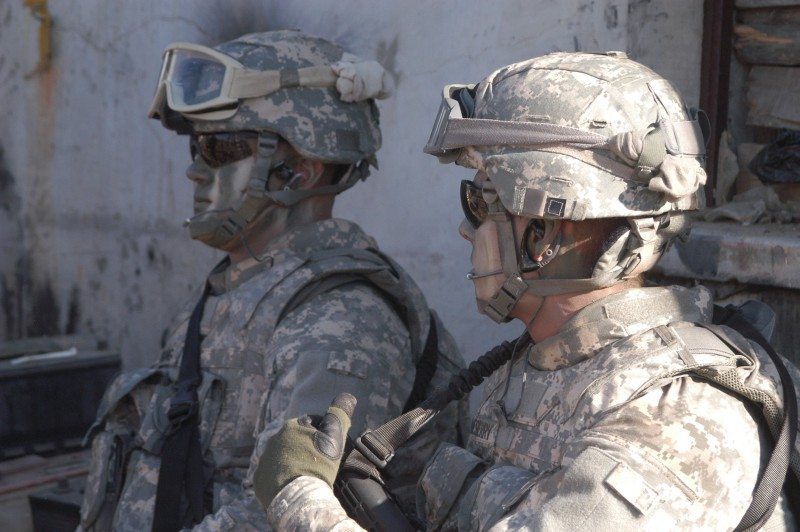Ten years of conflict has given rise not only to the world’s best body armor and state-of-the-art battlefield technologies, but also a new understanding about ways to prevent eye injuries and treat those who suffer from them.
When the war in Afghanistan kicked off in 2002, ballistic goggles were hard to come by in the military supply system and combat troops rarely wore them, Army Col. (Dr.) Donald Gagliano, the executive director of the Vision Center of Excellence, told American Forces Press Service.
As improvised explosive devices became the enemy’s weapons of choice, eye injuries soared, affecting as many as 29 percent of all battlefield casualties, Gagliano estimated. So as the military began introducing improved body and head protection, ensuring troops had and wore ballistic glasses also became a top priority.
Eye injuries initially dropped, Gagliano reported, but as IEDs and high-energy blast waves become increasingly powerful, eye injuries continued to take their toll. So as part of its charter, the Department of Defense and Department of Veterans Affairs Vision Center of Excellence is focusing on ways to prevent injuries and improve the care and rehabilitation for wounded warriors.
In addition to exploring these areas, the center is promoting research that could one day restore vision to those who have lost it, Gagliano reported.
Eye prosthetics are likely to be a decade or more away, but Gagliano said he’s optimistic that initiatives under way will bear fruit. In the meantime, Gagliano and his deputy, Dr. Mary Lawrence, offered several suggestions to help prevent battlefield eye injuries and ensure the best outcome when they occur:
— Wear ballistic eye protection. While not completely eliminating eye injuries, they greatly reduce their occurrence, particularly against fragments. One of the programs at the Center of Excellence is exploring improvements to existing ballistic eye protection devices.
— Avoid wearing contact lenses in combat environments, particularly in dirty, sandy areas. In addition to the high risk of infection, wearers risk exposure to flying fragments from explosions or weapons fire.
— Consider refractive surgery to improve vision problems and eliminate the need for corrective glasses or contact lenses.
— Don’t apply pressure to the eye area when providing battlefield care for a comrade suspected of having an eye injury. Pressure may be the appropriate treatment to some wounds, but in the case of eye injuries, it can cause severe complications and even blindness.
— Apply a Fox Eye Shield, if available, over the eyes of any patient suspected of having an eye injury. Fox Eye Shields are now included in every Air Force and Marine Corps individual first aid kit, and the Army is expected to begin adding eye shields to its kits soon. If one of these metal devices isn’t immediately available, Lawrence recommended using another rigid surface such as the bottom of a coffee cup or even knee pads or elbow pads and taping it over the patient’s eyes.
Vision has a major impact on military readiness as well as quality of life, Gagliano emphasized.
“If you can’t see, you can’t fight,” he said. “And the bottom line is that makes not only you, but also your entire unit, vulnerable.”











